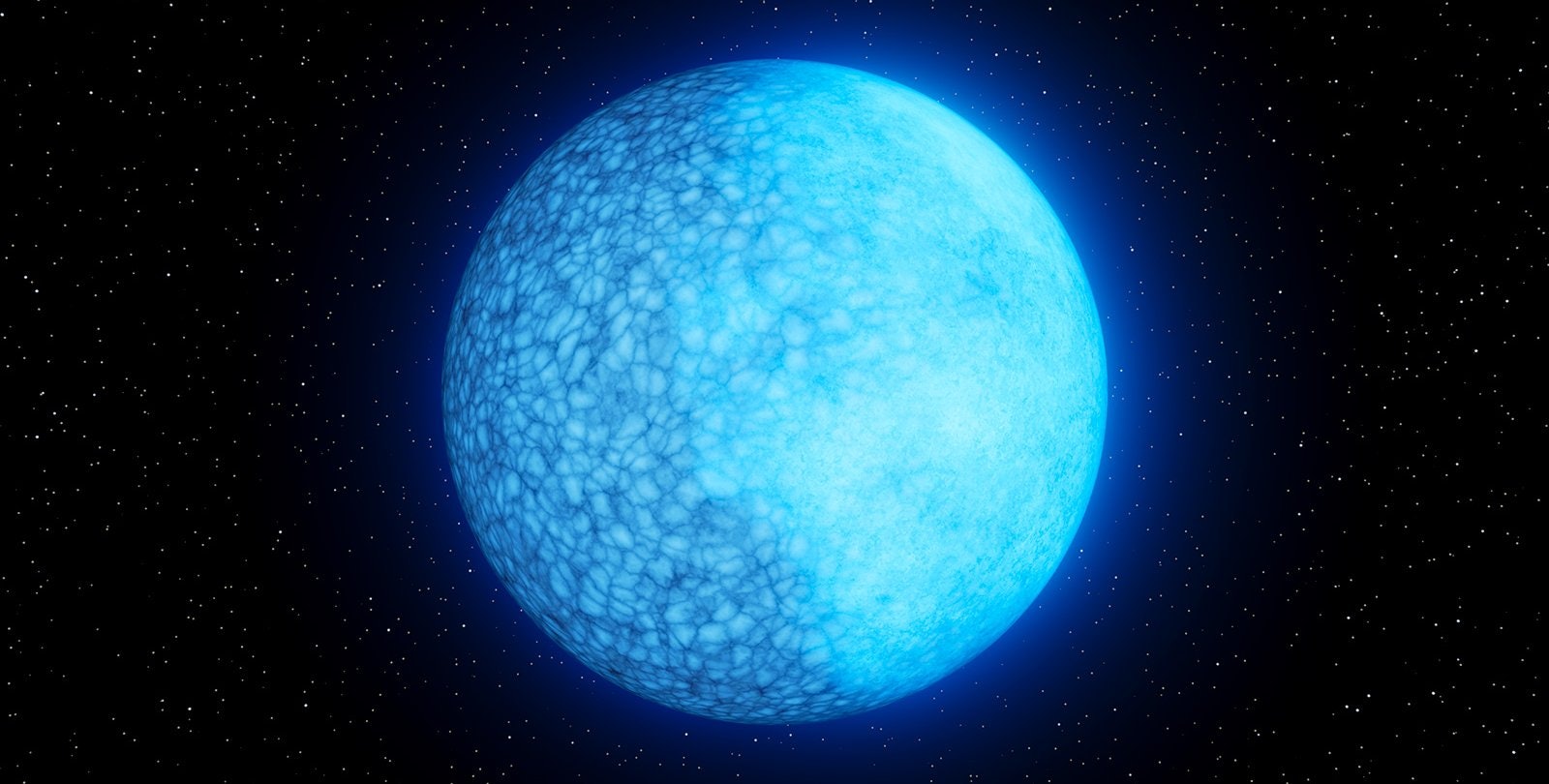
Until recently, Caltech postdoctoral astronomy researcher Ilaria Caiazzo was merely hunting the skies for the bodies of dead stars. She never expected to discover an exotic, two-faced white dwarf.
”It was quite a serendipitous discovery,” Caiazzo tells Inverse. “We did not expect to find something like this. It was not predicted. It's a new class of [stellar] object.”
White dwarf stars are stellar remnants, the glowing hot remains of a star that has exhausted its thermonuclear fuel supply and blown most of the rest of its mass out into space, leaving the compact former core of the old star. Instead, they glow faintly with residual heat and slowly cool down over time, usually showing compositions of either hydrogen or helium.
Except for the white dwarf ZTF J203349.8+322901.1. While Caiazzo was searching for signs of white dwarfs that may have recently merged together (dim stars that rotated, were magnetized, and varied in brightness), she found ZTF J203349.8+322901.1 — and noticed something weird. It appeared to have one side with a surface consisting of hydrogen, while the other side’s surface consisted of helium.
”I found it because it varies up and down in luminosity and because it looks like a white dwarf and so I thought it was one of those objects,” Caiazzo says. ”Then I took a spectrum and I analyzed it more and realized that it's a completely different class of object.”
In a new paper published Wednesday in the journal Nature, on which Caiazzo is the lead author, she and her colleague nicknamed ZTF J203349.8+322901.1 “Janus,” after the Roman god of doorways and transitions; the two-faced god.
It’s a finding that could change how we understand the afterlife of modest-sized stars, including our Sun, which is destined one day to take its place amongst the white dwarf ghosts of stars across the sky.

Finding the face of Janus the white dwarf
The Janus star first popped on Caiazzo’s radar from looking at data from the Zwicky Transient Facility (the ZTF in the official name for Janus), which performs a nightly scan of the night sky from Catletch’s Palomar Observatory in California.
Further observations from Palomar showed that the Janus star rotated every fifteen minutes. Additional observations made with the Keck Observatory in Hawaii using a spectrograph, an instrument that can identify chemical compounds in light based on the way different elements absorb different wavelengths, are what showed the unique two-faced nature of the star.
“I could take one spectra every minute as it rotates, and it just completely changes from showing only hydrogen to showing online helium,” Caiazzo says. “When people look at these spectra, they're completely blown away. I've been talking about this object with lots and lots of people and showing the plots and it is a bit bonkers.”
There are three important peculiarities of white dwarfs, according to Caiazzo:
The first is that they are the dead cores of former stars, meaning no nuclear fusion takes place inside them — it's only their residual heat that keeps them luminous. The second peculiarity is that they are strongly magnetized, with stable and structured magnetic fields.
And the third peculiarity is that they are very dense.
“This one is a bit more massive than our Sun — but it's extremely compact. The radius, I think, is about 3000 kilometers,” Caiazzo says. “And so the gravity on the surface is extremely high.” (For reference, Mars’ radius is about 3389 kilometers.)
This strong gravity causes elements in white dwarfs to stratify vertically, such that heavier elements sink, and lighter ones rise. So for many white dwarfs, spectrographic observations show hydrogen surfaces, but this is likely only a thin veneer floating on top, Caiazzo says, with most of the former star’s hydrogen having been blown off into space as it died.
But other white dwarfs show only helium surfaces, and those white dwarfs are always 30,000 degrees kelvin (about 53,500 degrees Fahrenheit) or cooler in temperature.
“What happens at 30,000 degrees is that the helium layer becomes very convective close to the surface,” Caiazzo says, and that turbulence breaks the hydrogen layer and mixes it with the helium. “The hydrogen gets completely diluted and so you don't see it in the spectrum anymore.”
It’s possible that she caught the Janus white dwarf in the act of transitioning from a warmer hydrogen-dominated white dwarf, to a cooler helium-dominated white dwarf, given that Janus is an estimated 35,000 degrees kelvin at present. Still, it’s not clear how long that transition should take — Caiazzo has been observing Janus for more than seven years now and it remains stable — and why it wouldn’t happen all over the white dwarf’s surface all at once.
Two theories for a two-faced star
One theory is that Janus’s magnetic field is in some way lopsided or uneven, such that it is inhibiting the convection currents on one side of the white dwarf. This would allow a thicker layer of hydrogen than usual to accumulate, a sort of “hydrogen ocean,” to form on one hemisphere of Janus, an idea put forth by one of Caiazzo co-authors on the new paper, Caltech theoretical physicist James Fuller.
But such a hydrogen ocean likely wouldn’t survive the convection currents inside a white dwarf once it cooled below 30,000 degrees Kelvin. If other Janus-type white dwarfs are discovered that are 30,000 degrees or cooler, it would rule out the hydrogen ocean hypothesis.
The other theory Caiazzo and her colleagues detail in the paper also draws on magnetic fields, this time suggesting a lopsided field could inhibit convection on one hemisphere of a white dwarf and preserve the thin hydrogen layer floating on top. But this theory would only hold if Janus-type white dwarfs are very near the 30,000 degree kelvin mark. Too hot, and they remain hydrogen dominated, too cold, and convection will become too powerful and mix up and hide any hydrogen that was on the surface.
Either way, “it's this interplay between very strong gravity on the surface of the white dwarf, magnetic fields and convection, that can create this type of object,” Caiazzo says.
The next step for Caiazzo and her colleagues is to keep looking for more of these unusual white dwarfs. At least one earlier observation had already found one white dwarf with similar makeup, though not as extreme, and now that she knows what to look for, Caiazzo is already finding new candidates.
“We know of about 500,000 white dwarfs, so it’s a long search,” she says. But it’s a search that will be sped up by upcoming spectrographic surveys, such as the still-under-construction Vera Rubin Observatory will conduct, scanning the spectra of millions of objects in the night sky.
“If I see that there's at least a little bit of helium and hydrogen in the spectrum, I can narrow down the search, finding more of these objects,” Caiazzo says. ”But I'm already finding quite a lot.”







